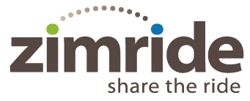 Zimride is a social ride sharing service. The –based company was founded in 2007 and recently raised $6 million in Series A funding.
Zimride is a social ride sharing service. The –based company was founded in 2007 and recently raised $6 million in Series A funding.
SUB: Please describe Zimride, and the value proposition you offer to your customers.
Zimmer: Zimride is the largest online social ride sharing service in the U.S, and we’re transforming the transportation infrastructure by integrating social networks and ride sharing. We embrace ridesharing as a social activity, and the service integrates with Facebook to make it fun and easy for users to share the seats in their car or find a ride.
Zimride currently has ridesharing communities on over 120 university and corporate campuses across 30 states in the U.S.—in fact, 35 percent of Facebook employees use us! And we’ve recently rolled out an SF/LA route that’s picking up steam. We’ve even partnered with artists Jack Johnson, Dave Matthews Band and Sheryl Crow to provide ridesharing to their events.
Since launching in 2007, Zimride has facilitated more than 26,000 carpools, helped users travel over 100 million miles and created over $50 million worth of savings in vehicle operating expenses.
SUB: How does the service work, from the user’s perspective?
Zimmer: Zimride connects drivers and passengers online. Participants create profiles that show their favorite in-car music, radio stations and even smoking preferences; then if you have seats available in your car, post your ride on the site with your price for the seats available. It’s easy to find passengers and coordinate your trip, check out profiles and read reviews to determine who your next passengers will be. If you need a ride, find the route you want and check profiles and reviews to learn more about your driver.
Because Zimride users connect via Facebook, it adds a layer of trust to the system and gives drivers and passengers a better idea of who they are sharing rides with. So, before a rider accepts a seat in a car or a driver accepts a passenger, he or she can view the person’s profile information to ensure he or she is comfortable with the match. And drivers and passengers are encouraged to communicate with each other before the ride.
SUB: Who do you consider to be your competition?
Zimmer: No one has the same approach as Zimride with Organization Networks including UCLA, Stanford, Harvard, Intuit, Facebook and JetBlue—along with a consumer strategy. Other companies in a similar space include GoLoco, PickupPal, Zebigo, and Avego.
SUB: What do you offer that differentiates Zimride from your competitors or from companies with similar offerings?
Zimmer: Our combination of social and accessibility is really key to our success. Zimride users connect via Facebook, adding a layer of transparency to the system. Users can view profiles of potential rideshares before accepting, which removes the anonymity that accompanies other forms of rideshare connections, allowing users to feel secure about their rideshare partners. On Zimride, participants create profiles that show their preferences to ensure an enjoyable ride.
And Zimride isn’t just about changing transportation to be more efficient and cost-effective, but it’s really about the relationships our users build—we want to create a community around transportation. In fact, Zimride users cite cost savings as their initial reason to try the service, but say they come back for subsequent trips for the relationships they make.
SUB: What was the inspiration behind Zimride? Was there an “aha” moment, or was the idea longer in developing?
Zimmer: CEO and founder Logan Green was inspired by what he saw on a 2005 trip to Zimbabwe—a grassroots public transportation system—and so he derived the firm’s name from that country. The name also made sense when he met me through Facebook, where the service started as an application.
Logan has a background in transportation and web development, and he created the first car-share program at UC Santa Barbara and served on the board of the Santa Barbara Metropolitan Transit District. I’m passionate about community driven solutions to environmental problems. I actually left Lehman Brothers in early 2008, where I spent two years after graduating from Cornell University’s hotel school. I moved from New York City to Palo Alto in July of 2008 by using Zimride to carpool across America.
SUB: When was the company founded, and what were the first steps you took in establishing it?
Zimmer: We initially launched as an application on Facebook in 2007, and we were one of the first companies to do this. In fact, we received $250,000 in seed money from a Facebook (fbFund) grant the same year.
In order to build the critical mass we knew would be imperative to a successful ride-sharing service we began by initially only allowing users from verified social networks such as colleges, universities and companies to use the platform. This gave us a consistent, large, dependable user base. Then in August this year, we opened our first public route, from San Francisco to Los Angeles. The route was so successful that we’ve now included the reverse route from Los Angeles to San Francisco. And more public routes are coming!
SUB: You recently raised $6 million in Series A funding—how do you plan to use the funds?
Zimmer: We plan to use this new round of funding to significantly scale our 120 current networks, build out new markets (municipalities) and routes, and expand product functionality (mobile, transactions etc.).
SUB: Why was this a particularly good time to raise new funding?
Zimmer: We have made serious milestones from a revenue and adoptions stand point.
SUB: What big goals do you have for Zimride over the next year or so?
Zimmer: We maintain our vision of creating a new form of transportation where everyone, everywhere will be able to say, “I can fly, take the bus or Zimride.” We first launched as a native Facebook app and started the SaaS business to build up networks, and we eventually grew to break even with 100 networks in July this year.
So over the next year, Zimride plans to grow into a known brand and service for students, employees and the general consumer. We plan to reach more than 300 networks and double the size of the company.
Zimride – www.zimride.com












